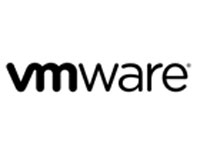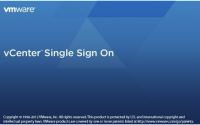Changes in vSphere 5.x compared to 4.x
Below table highlights the major changes in VMware vSphere 5.x compared to the previous vSphere 4.x series.
|
Service Console is removed |
ESXi does not include a Service Console. Many tasks can be performed by using vCLI commands in place of esxcli commands on Service console and also by using powercli |
|
ESXi does not have a graphical installer |
No more graphical installer , ESXi comes with a text installer. |
|
vSphere Auto Deploy and vSphere ESXi Image Builder CLI |
Before ESXi 5.0, ESXi was installed on the physical disk of each ESXi host. With ESXi 5.x, you can load an ESXi image directly into memory by using vSphere Auto Deploy. You can provision and reprovision large numbers of ESXi hosts efficiently with vCenter Server, and manage ESXi updates and patching by using an image profile. You can save host configuration such as network or storage setup as a host profile and apply it to the host by using Auto Deploy. You can use ESXi Image Builder CLI to create ESXi installation images with a customized set of updates, patches, and drivers. |
|
Changes in the ESXi installation and upgrade process |
ESXi 5.x uses a single installer wizard for fresh installations and upgrades. ESXi 5.x also provides a new option for deploying ESXi directly into the host memory with vSphere Auto Deploy. The vihostupdate and esxupdate utilities are not supported for ESXi 5.x. You cannot upgrade or migrate from earlier ESX or ESXi versions to ESXi 5.x by using any command-line utility. After you have upgraded or migrated to ESXi 5.x, you can upgrade or patch ESXi 5.x hosts using vCLI esxcli commands. Important After you upgrade or migrate your host to ESXi 5.x, you cannot roll back to your version 4.x ESX or ESXi software. Back up your host before you perform an upgrade or migration, so that, if the upgrade or migration fails, you can restore your 4.x host. If you are upgrading an existing ESX or ESXi host, see the vSphere Upgrade documentation. |
|
Changes to partitioning of host disks |
All freshly installed hosts in vSphere 5.x use the GUID Partition Table format instead of the MSDOS-style partition label. This change supports ESXi installation on disks larger than 2TB. Newly installed vSphere 5.x hosts use VMFS5, an updated version of the VMware File System for vSphere 5.x. Unlike earlier versions, ESXi 5.x does not create VMFS partitions in second and successive disks. Upgraded systems do not use GUID Partition Tables (GPT), but retain the older MSDOS-based partition label. |
|
VMware vCenter Server Appliance |
As an alternative to installing vCenter Server on a Windows machine, vSphere 5.x provides the VMware vCenter Server Appliance. The vCenter Server Appliance is a preconfigured Linux-based virtual machine optimized for running vCenter Server and associated services. |
|
vSphere Web Client |
The vSphere Web Client is a server application that provides a browser-based alternative to the traditional vSphere Client. You can use a Web browser to connect to the vSphere Web Client to manage an ESXi host through a vCenter Server. |
|
vCenter Single Sign On |
vSphere 5.1 introduces vCenter Single Sign On as part of the vCenter Server management infrastructure. This change affects vCenter Server installation, upgrading, and operation. Authentication by vCenter Single Sign On makes the VMware cloud infrastructure platform more secure by allowing the vSphere software components to communicate with each other through a secure token exchange mechanism, instead of requiring each component to authenticate a user separately with a directory service like Active Directory. |


Thanks for wrinte this blog..
Just to add on .. there is major difference in VMware HA cluster aritecture.
earlier it was master slave in vsphere 5.0 they came up with Primary secondary.
Hello,Can you please prdvioe me details of your Home LAB. I am planning to build one and has limited budget currently. So your inputs will be valuable to me as you already have one.